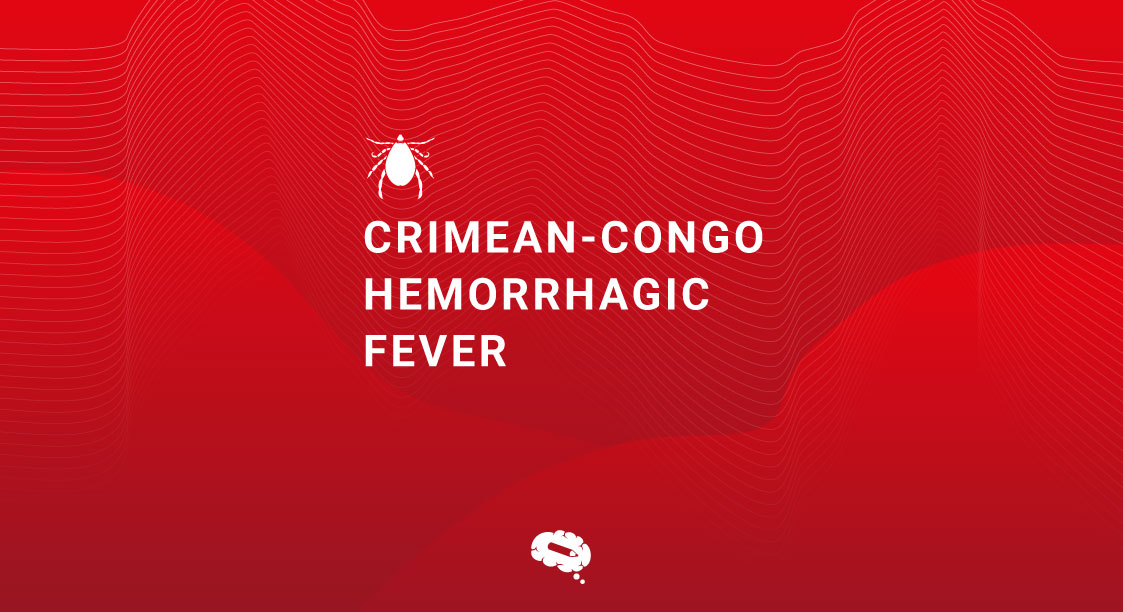The occurrence of fever accompanied by muscle aches, headaches, vomiting, and nausea is almost zero percent fatal these days. But, in the mid-twentieth century, these symptoms meant horror in Europe, Asia, and Africa. This illness was known as Crimean-Congo hemorrhagic fever.
With a fatality rate of 10–40%, this virus is as deadly as its name appears to be and affects both humans and animals, and is primarily caused by ticks. In this article, we’ll be learning in detail about this virus’s origin, its deadly nature, its symptoms, and the prevention method.
What is Crimean-Congo Hemorrhagic Fever?
Crimean-Congo Hemorrhagic Fever (CCHF) is a tick-borne zoonotic viral disease. It belongs to the genus, Nairovirus of the Bunyaviridae family, which is endemic in Asia, Africa, Eastern Europe, and the Middle East.
The first occurrence of CCHF was at the time of World War II, and it was found among Soviet Union personnel in Crimea. Subsequently, it was found that another type of virus that caused febrile illness in Congo also had similar characteristics. Thus, combining the two places came the name Crimean-Congo Hemorrhagic fever.
CCHF virus mainly attacks domestic animals such as sheep, goats, and cattle as its host. Although not all ticks carry the CCHF virus, ticks of the genus Hyalomma are the principal vector.
Create beautiful virology infographics with just a few clicks
Using our tool, you can easily create diagrams and infographics to upgrade your paper and draw the attention of your readers. An internal study performed by Cactus Communications shows that papers with infographics have 15x more citations and 8x more shares on social media. Upgrade your work with the power of visuals.
What causes Crimean-Congo Hemorrhagic Fever and how does it spread?
Unlike other viruses that originate from water or air, this virus originates from ticks and then passes on to animals, which in turn gets passed to humans.
When Ixodid ticks (belonging to the genus Hyalomma) containing the CCHF virus bite an animal, the virus then enters the bloodstream of the animal and starts using it as a host leading to a tick-animal-tick cycle whereby if a non-infected tick bites the infected animal, that tick too gets infected affecting other animals.
The CCHF virus is transmitted to people when they come in contact with an infected animal’s blood or tissues during and immediately after slaughtering it. Because of this reason, people who work in the livestock industry, such as slaughterhouse workers, butchers, and veterinarians, are the major hosts of this disease.
It spreads among humans by indirect contact, such as if someone comes in contact with an infected person’s secretions, blood, or other body fluids, they get infected by it. A person may get infected by this virus in hospitals too, because of improper sterilization of medical equipment, contaminated medical supplies, or the reuse of infected injection needles.
Signs and Symptoms of Crimean-Congo Hemorrhagic Fever
The virus enters the human body and starts incubating, which usually takes 2 to 9 days, and maximum, it may go up to 13 days.
The initial symptoms of CCHF include fever, headache, weakness, dizziness, and bleeding from the nose, mouth, or other body openings. Severe symptoms include failure of the liver and kidney, causing immediate death. In some cases, the symptoms include red eyes, red throat, and red spots all over the body. It may also include jaundice and may damage sensory perceptions.
The death rate of CCHF is estimated to be around 30%.
Prevention and Treatment of Crimean-Congo Hemorrhagic Fever
The best way to prevent CCHF is to avoid tick bites and to take precautions when working with animals that may be infected with the virus by wearing protective clothing and using insect repellents.
There is no specific treatment for CCHF; it is primarily supportive. It includes careful observation of body fluid balance, hemodynamic support, correction of abnormal electrolytes, and appropriate treatment of secondary infections.
Ribavirin vs. Crimean-Congo Hemorrhagic Fever
It’s important to highlight that the antiviral drug ribavirin is proven to be effective against CCHF infection. Though the virus seems completely off-the-radar these days, it’s still necessary to take good care of ourselves and ensure that the hospital supplies are well-sterilized. It’s also important to stay away from ticks, and if you suspect a tick bites you, visit the nearest hospital and get a thorough check-up.
Communicate your ideas and findings with no effort
What’s a better way to communicate your thoughts and research work than through visuals? Mind the Graph is an infographic tool with a library of graphical illustrations that will help you communicate your ideas and findings with no effort.


Subscribe to our newsletter
Exclusive high quality content about effective visual
communication in science.




